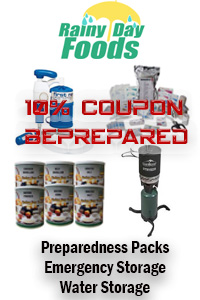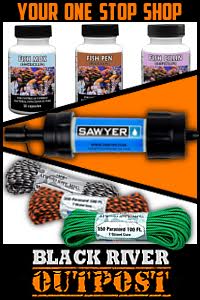By James.
Survival Knives
Outdoor survival knives have been an essential tool ever since the first explorers cut their way across the new frontier. The right knife should be sharp, durable and safe, allowing the user to prepare firewood, build shelters and slice fabrics and materials.
Here is everything you need to know about when shopping for survival knives.
– Basics:
No matter what kind of knife you choose, it needs to have two things:
1) a fixed blade, which means that the blade does not fold or slide, like with a pocket knife
2) a full tang, which means the blade goes all the way into the handle, preventing breaking or dislodging.
These two basics are important if you are going to use the knife to chop, gouge, dig or whittle.
– Materials:
Knife owners often debate which is better: stainless steel or carbon steel? Both have their strengths and weaknesses. Carbon is much easier to sharpen, but because of its composite construction, is likely to rust faster. Stainless steel is more difficult to sharpen, but because of its makeup, is more rust-resistant.
– Points:
Outdoor survival knives come with different points. With a clip-point, the back of the top of the spine is “clipped” to make the knife finer and sharper. A drop-point has the entire spine of the blade sloped, strengthening the whole structure.
A flat-grind is a highly-tapered blade with enhanced sharpness. And a hallow-grind is a blade that has been shaved down to create a beveled edge, much like a straight razor.
All of these points provide different strengths and functions. Whichever one you choose, make sure it is durable and maintains its edge. This is what is most important when you are in the middle of the woods.
– Handles:
You should be able to grip the handle confidently, especially when it is wet. It can be made of wood or composite, so long as it absorbs shock and has a lanyard holder or can be fitted with one.
– Sheaths:
When it comes to sheaths, there are ones you want to possess and ones you want to avoid. Don’t get a leather sheath. They hold in moisture, which can make the blade rust faster. They’re also unreliable; the stitching can give out after minimal use. Look for a nylon or polymer sheath. They are durable, reliable and firmly hold the knife in place.
Survival Hatchets
Many people think having a good outdoors survival knife is all that you need but there are many tasks that simply aren’t suited to knives. Chopping wood, carving, and generally most of the things a knife can be used for.
You never want to be caught in an outdoors survival situation without a proper blade and having a good survival hatchet is a great backup to a knife as well as being better suited for certain tasks.
There are several types of survival hatchets available, and each different type offers its own benefits and drawbacks. Some survival hatchets just serve better purposes than others in different situations.
The basic survival hatchet has many advantages. First of all, they are light, easy to carry and don’t take up much space. This means that you’ll be able to pack a survival hatchet without leaving other important items out of your survival bag. Because of the small, compact size and light weight, you can swing a survival hatchet quickly and it will damage whatever it strikes.
The biggest drawback of the basic survival hatchet is that the blades are usually less efficient than the tomahawk or small camp axe. It will usually take more chops with the survival hatchet to accomplish the same things that the tomahawk and small camp axe can accomplish in fewer chops.
Speaking of the tomahawk, these versatile types of survival hatchets can take your survival abilities to the next level. The biggest advantage of a tomahawk is that it is designed to be thrown in addition to being a traditional chopping tool. Ever since the Native Americans invented the tomahawk, it has been a valuable tool in the arsenal of outdoor adventurers.
They tend to do more damage than regular survival hatchets. The drawbacks are that it takes more skill to be able to take full advantage of the many uses of the tomahawk, and a tomahawk is usually slightly heavier than a traditional survival hatchet.
Finally, there is also room in this discussion for the small camp axe. The smallest of the three types of survival hatchet, the small camp axe is perfect for beginning outdoor adventurers and younger people tagging along on the adventure.
The small camp axe can safely cut stick for campfires and cut small branches out of the way when walking through bushes. However, unlike the tomahawk, the small camp axe is not designed to be thrown, and it has a smaller blade. That means it will do less damage than the tomahawk.
Survival hatchets are a great tool to have at your disposal, and they are an essential item to all outdoor adventures.
Note from PJ: Be very careful when wielding any hatchet or camp axe, if you aren’t careful it’s very easy to plant the sharp edge directly into a hand or leg
.









1 comment
The survival hatchet – http://www.topsurvivalweapons.com/survival-axe is the most important survival tool out there. It can do everything that a survival knife can do but it can also process wood much better and is better for defense as well.